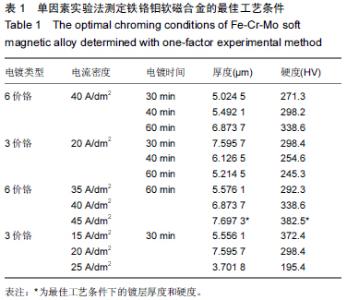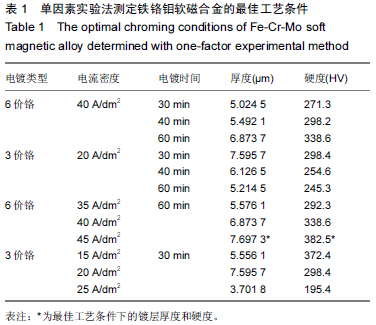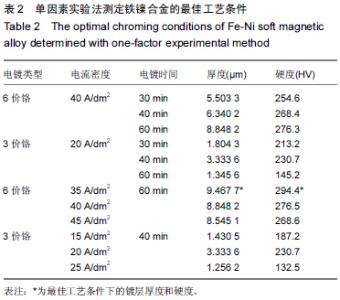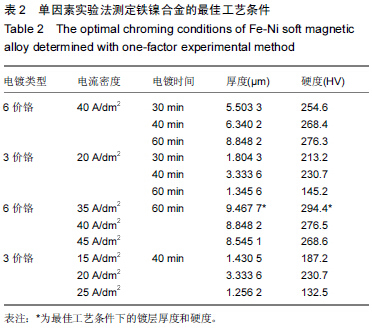| [1] Sun SY,Zhao YM,Zhang YM,et al.The research of using TiN nanometer film to improve the anticorrosive property of FeCrMo alloy.Zhonghua Kou Qiang Yi Xue Za Zhi.2003; 38(5):387-389.
[2] 张书垣,朱智敏,巢永烈.磁性附着体衔铁的耐腐蚀性研究[J].中国组织工程研究,2012,16(38):7151-7155.
[3] 赵铱民,陈文.齿科用铁铬钼软磁合金耐腐蚀性的电化学方法测定[J].中华口腔医学杂志,1994,29(2):119.
[4] Hai K,Sawase T,Matsumura H,et al.Corrosion resistance of a magnetic stainless steel ion-plated with titanium nitride.J Oral Rehabil.2000;27(4):361-366.
[5] Nakamura K,Takada Y,Yoda M,et al.Galvanic corrosion of ferritic stainless steels used for dental magnetic attachments in contact with an iron-platinum magnet.Dent Mater J.2008; 27(2)203-210.
[6] Lavrentiev MY,Wróbel JS,Nguyen-Manh D,et al.Magnetic and thermodynamic properties of face-centered cubic Fe-Ni alloys. Phys Chem Chem Phys.2014;16(30): 16049-16059.
[7] Kojima T,Ogiwara M,Mizuguchi M,et al.Fe-Ni composition dependence of magnetic anisotropy in artificially fabricated L1 0-ordered FeNi films.J Phys Condens Matter. 2014;26(6): 064207.
[8] Ekholm M,Zapolsky H,Ruban AV,et al.Influence of the magnetic state on the chemical order-disorder transition temperature in Fe-Ni permalloy.Phys Rev Lett. 2010;105(16): 167208.
[9] 姜瑞,聂二民,张春元,等.新型材料磁性附着体设计模型的建立[J].中国组织工程研究,2015,19(3):460-464.
[10] 张雪辉.电沉积Ni-W合金镀层的制备、结构及其性能研究[D].江西理工大学,2010.
[11] 余细波.电沉积制备Cu-Co合金镀层的工艺研究及性能表征[D].兰州理工大学,2011.
[12] Bayramoglu M,Onat B,Geren N.Statistical Optimization of Process Parameters to Obtain Maximum Thickness and Brightness in Chromium Plating.J Mater Proc Technol.2008; 203(1-3):277-279.
[13] El Sharif M,Chisholm CV.Characteristics of Electrodeposited Chromium. Trans IMF. 1997;75(6):208-212.
[14] El Sharif M.Electrodeposition Acceptable Process from Electrodepositionof Hard Chromium (Ⅲ) Electrolyte.Trans IMF.1999;77(4):139-144.
[15] Low CTJ,Wills RGA,Walsh FC.Electrodeposition of composite coatings containing nanoparticles in a metal deposit.Surf Coat Technol.2006;201(1-2):371-383.
[16] Vaezi MR,Sadrnezhaad SK,Nikzad L.Electrodeposition of Ni-SiC nano-composite coatings and evaluation of wear and corrosion resistance and electroplating characteristics. Physicochem and Eng Aspects,2008,315(1-3):176-182.
[17] Cai C,Zhu XB,Zheng GQ,et al. Electrodeposition and characterization of nano-structured Ni-SiC composite films. Surf Coat Technol.2011;205(5):3448-3454.
[18] Benea L,Bonora PL,Birello A,et al.Wear corrosion properties of nano-structured SiC-nickel composite coatings obtained by electroplating.Wear.2001;249(10-11):995-1003.
[19] Chen WW,Gao W.Sol-enhanced electroplating of nanostructured Ni-TiO2 composite coatings-The effects of sol concentration on the mechanical and corrosion properties. Electrochimica Acta.2010;55(22):6865-6871.
[20] 张书垣,朱智敏,巢永烈.磁性附着体衔铁的耐腐蚀性研究[J].中国组织工程研究,2012,16(38):7151-7155.
[21] 曾志翔,王立平,陈丽,等.三价铬电镀硬铬及镀层性能的研究[J].电镀与环保,2006,26(4):11-13.
|





